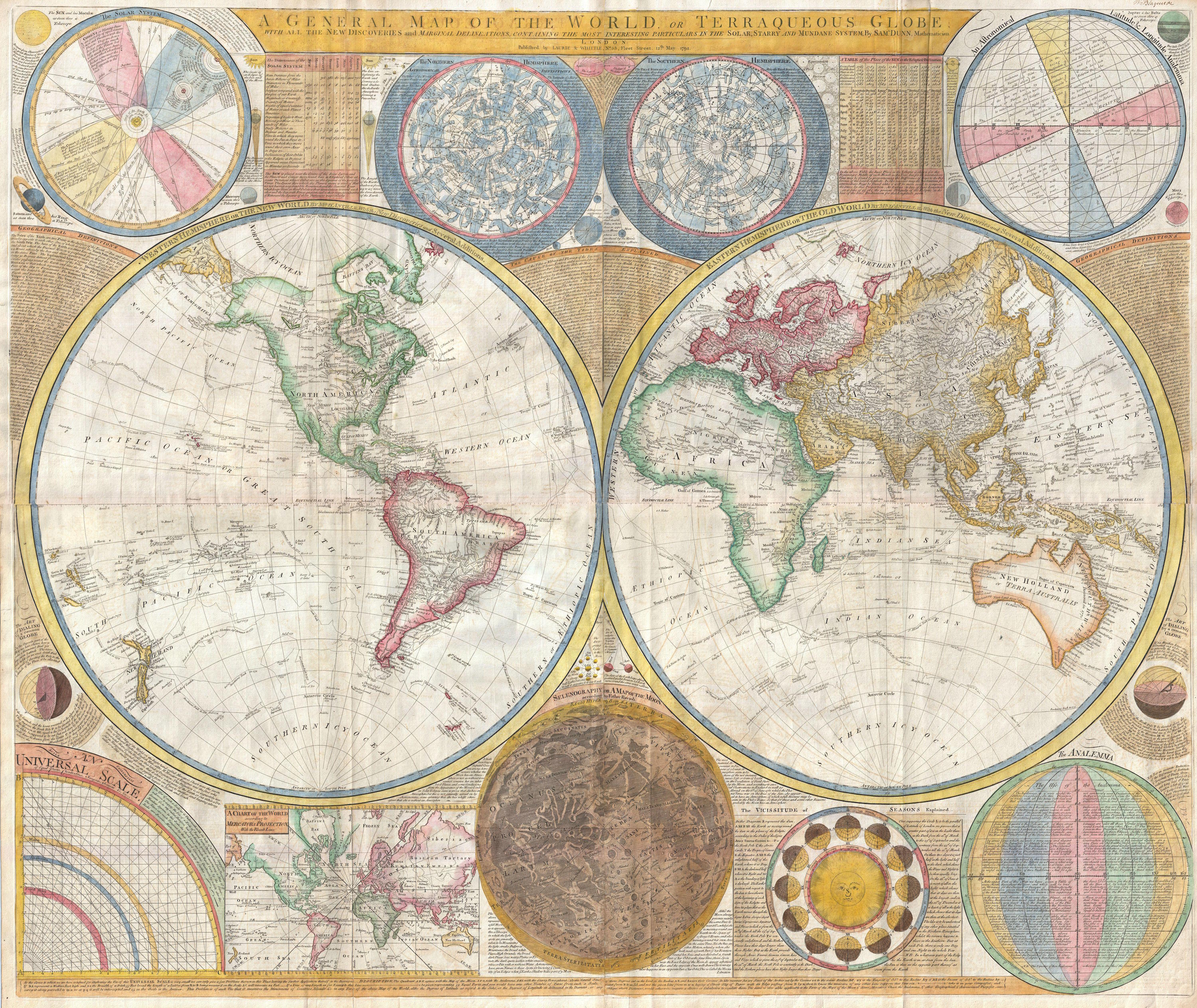Today we will show something extraordinary - this absolutely stunning and monumental double hemisphere wall map of the world by Samuel Dunn dating to 1794. This extraordinary map is so large and so rich in detail that it is exceptionally challenging to do it full justice in either photographic or textual descriptions. It covers the entire world in a double hemisphere projection. The primary map is surrounded by detailed scientific calculations and descriptions as well as northern and southern hemisphere star charts, a map of the Moon, a Latitude and Longitude Analemma chart, a map of the Solar System, a Mercator projection of the world, an Analemma. We have never featured a map before - it was Artur's idea to show it to you today. Below you will find his reflections. (and happy birthday to his Dad!)
Do you know art? It might look like a strange question, since art overall seems to be too broad for a telescope to grasp, its subtleties too delicate for a microscope to inquire, and the vagueness of its nature too tenuous to dissect. Art is unpredictable, ever mutating and based on opinion, while science is predictable, rooted on solid laws and consisting of empirical theories. Knowledge and arts are two separate entities, focused in distinct pursuits: if the first one can take you closer to the truth of science, the same cannot be said about the truth of art. My father, whose birthday is this week, dedicated his passion to another art - traveling. As he lectured Geography, he visited many places and experienced their different natures, confronted different cultures, walked through paths unlike any other after or before and explored the endless possibilities that a landscape can create. This wondering spirit might just be the one of Art, the restless will to draw one’s own boundaries, to find the place of the self in the universe. Geography also studies cities. But most of the cities my father once knew are now completely changed. The streets he had once seen might now have moved from geography to history. But this doesn't change the essence of my father's memory. Like the “unscientific" art has changed from Baroque to Impressionism and Cubism, the "scientific" science has change from Geocentric to Heliocentric, from Relativity to Quantum (and perhaps to String Theory). And what remains as the core of art, the core of science, and the core of my father's memory, is this marvelous and ingenuous will to discover what it means to be rooted in time and space. So don’t be envious of the ones who were born in times when the best works or art had been created, nor the greatest science theories had been developed: just be proud to be born after your father, like I am; during this time when you can make a change.
Artur Deus Dionisio


 Thomas Kitchin
Thomas Kitchin